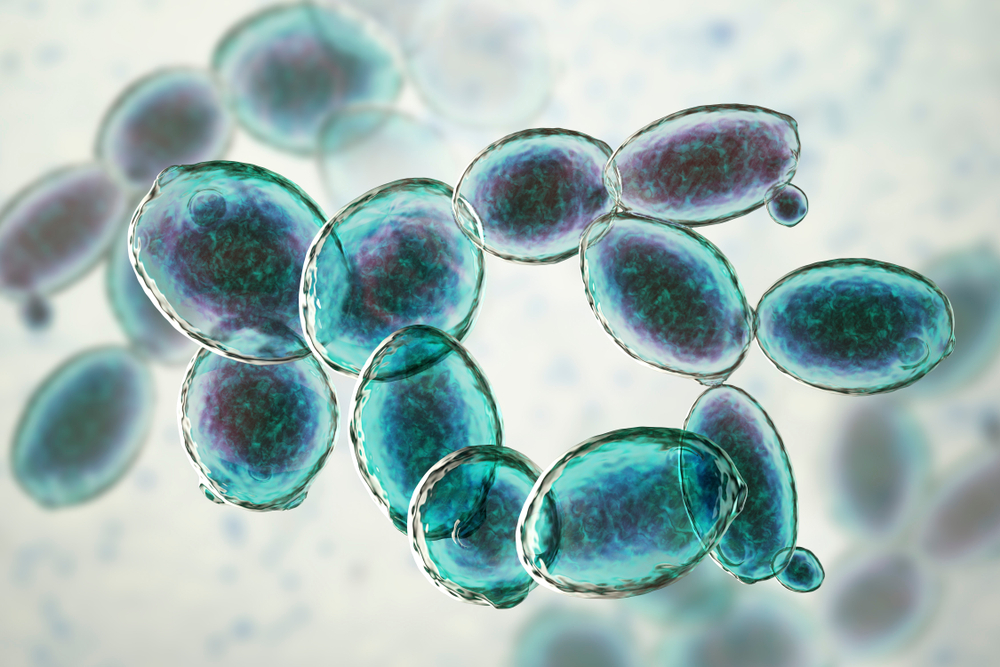Bacteria and yeasts can sustainably produce substances that we currently have to source from fossil fuels. But they can’t do it very efficiently yet. A new project led by WUR researcher Ruud Weusthuis has won a grant from the Dutch Research Council (NOW) to work on adapting microbes so they can produce substances like acetone more efficiently.
I’m very happy with this grant’, says Ruud Weusthuis, personal professor of Microbial Biotechnology in the Bioprocess Engineering group. His project has been awarded an ENW-XL grant of over three million euros from the Dutch Research Council. He has been fascinated by electrons in micro-organisms throughout his career. If no electrons are lost in a chemical conversion, you achieve the theoretically maximum yield: the initial substance is fully converted into the final product. Glucose, for example, contains 24 electrons, and can be converted into two ethanol molecules, each containing 12 electrons.
In practice, however, a lot of things happen at once in a living cell: dozens of enzymes use the same electrons for their own reactions. To get the maximum yield, you have to be able to control the route of the electrons. Weusthuis thought up a way for researchers to do that.
New electron carrier
Many reactions in a cell make use of an electron carrier, a redox cofactor. The most important of these in all organisms is NAD (nicotinamide adenine dinucleotide). Weusthuis wants to introduce a new carrier into the cell: NMN (nicotinamide mononucleotide), which is a component of NAD. ‘Enzymes won’t recognize this carrier unless we modify it,’ he explains. ‘That way, we can ensure that only enzymes on the desired route can use the electrons, and we prevent them from leaking out via other reactions.’
We currently still make most of our chemicals if this sort from oil; yeasts and bacteria can offer a sustainable alternative
Ruud Weusthuis, personal professor of Microbial Biotechnology
The idea is ingenious, but it has one drawback: if all the electrons go to the desired product, the microbe can’t grow anymore. So there has to be a second route as a bypass leading to essential reactions for growth. In a model that Weusthuis and colleagues built to predict the consequences of the new carrier for the microbe, it turned out that the microbe spontaneously mapped out a second route of this kind. ‘That will be harder in real life. That is why the project also includes a group from VU University Amsterdam, which is letting the microbes evolve in the lab so that the steps are accelerated.’
Sustainable
The project will work with the bacterium Escherichia coli and with baker’s yeast Saccharomyces cerevisiae. The researchers want the bacterium to use the new electron carrier to make lactic acid from glucose; in the yeast they want to make ethanol from glucose. ‘In those routes, only two enzymes are involved in electron transfer, and this is the basis.’ It is no coincidence that the project is starting with glucose. Weusthuis: ‘This route comes from energy metabolism, which is inherently very efficient.’
If this basis proves to work, the route can be developed for making other products such as solvents like acetone and ethyl acetate, which is used in nail polish. At the moment, we mostly produce such chemicals from oil. Yeasts and bacteria could offer a sustainable alternative which, thanks to the project, could become more competitive in future compared with processes based on fossil raw materials.
Project partners
The project, called ‘Control over electrons in microbial metabolism’, is a collaboration between Wageningen University & Research, VU University Amsterdam, the Technical University of Delft and The Novo Nordisk Foundation Center for Biosustainability (DTU Biosustain) at the Technical University of Denmark.

 If it works, baker’s yeast could produce ethanol in an optimal process in the future. Photo Shutterstock.
If it works, baker’s yeast could produce ethanol in an optimal process in the future. Photo Shutterstock. 

